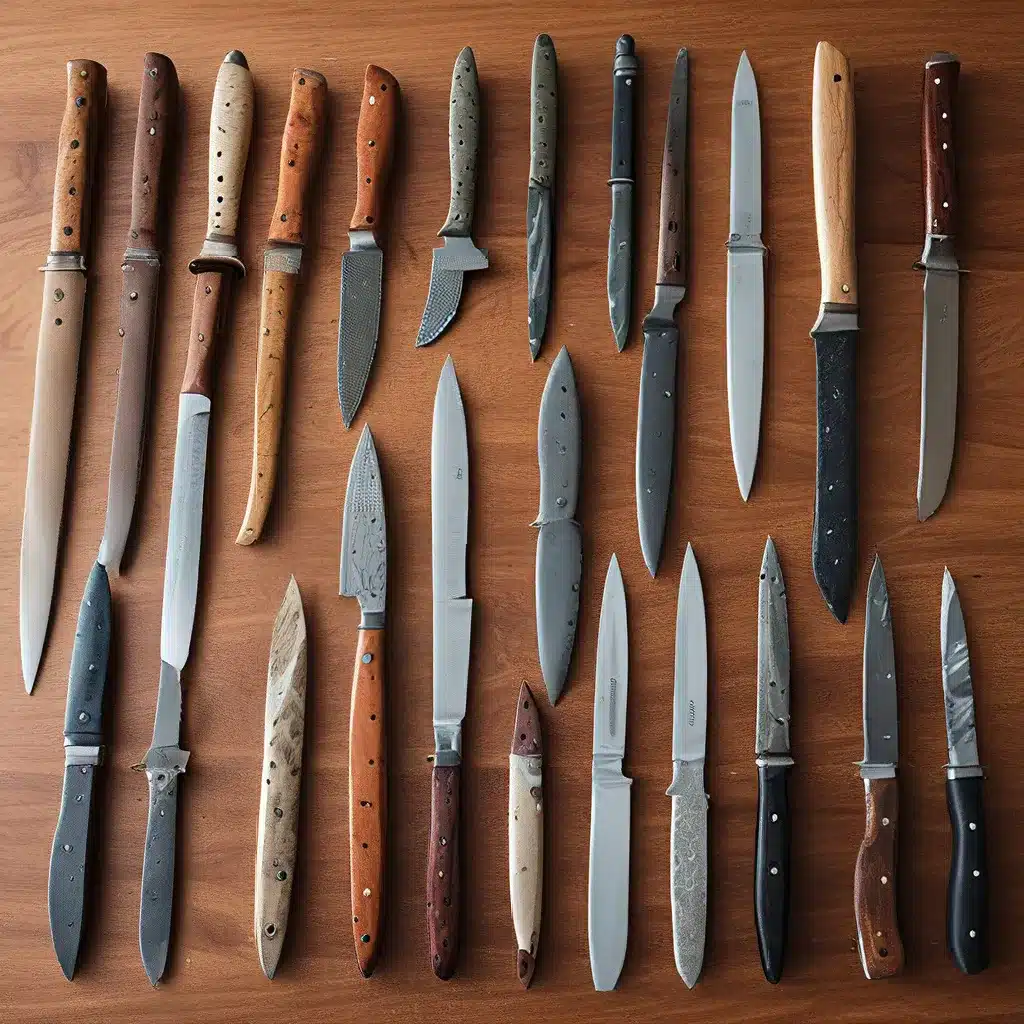
Ah, the allure of knife collecting – a hobby that combines history, craftsmanship, and the thrill of the hunt. As a self-proclaimed knife enthusiast, I can attest to the captivating world of pocket knife collecting. It’s not just about acquiring shiny new blades; it’s about immersing yourself in a rich tapestry of stories, mechanics, and the ever-evolving world of knife design.
The Art of Pocket Knife Collecting
Pocket knives have a fascinating history, dating back to the Roman era when they were used as practical utility tools. Over time, these pocket-sized companions have evolved into a specialized art form, coveted by outdoor enthusiasts, hunters, and collectors alike.
One of the most intriguing aspects of pocket knife collecting is the sheer diversity of styles and designs. From the classic Swiss Army knives to the highly sought-after custom-made creations, each knife holds a unique story and set of features that captivate the collector’s eye.
As I delve deeper into this hobby, I’ve come to appreciate the nuances that differentiate one pocket knife from another. The type of blade steel, the choice of handle materials, and the craftsmanship of renowned knife makers – these details all contribute to the value and desirability of a particular piece.
Investing in Rare and Collectible Knives
But pocket knife collecting is not just a hobby; it’s also a lucrative business opportunity. The market for rare and collectible pocket knives has been steadily growing, presenting savvy collectors with the chance to build a valuable investment portfolio.
To succeed in this endeavor, it’s crucial to understand the economics behind pocket knife collecting. Factors such as market trends, pricing, and demand play a significant role in determining the value of a particular knife. Collectors must stay informed and develop a clear buying and selling strategy to capitalize on the ever-changing market.
Grading and certification are also essential elements in the world of pocket knife collecting. Established grading systems provide a standardized way to assess the quality and condition of a knife, while certification helps to authenticate its origin and provenance. These factors can significantly impact a knife’s value and help collectors make informed investment decisions.
Discovering Rare and Unique Knives
One of the most exciting aspects of pocket knife collecting is the thrill of the hunt for rare and unique models. These elusive gems can be found in a variety of places, from estate sales and auctions to antique stores and online marketplaces.
When evaluating the rarity of a pocket knife, collectors must be familiar with the characteristics that set a knife apart. Limited edition and numbered models, knives made by well-known makers, and those with unique features are all highly sought-after by discerning collectors.
Additionally, the age, condition, and provenance of a knife can contribute to its rarity and value. Knowing how to properly assess these factors is crucial for identifying hidden gems and making informed purchasing decisions.
Building a Comprehensive Collection
Successful pocket knife collectors often emphasize the importance of quality over quantity and a long-term approach to building a collection. By forging relationships with other collectors and experts in the field, they gain access to rare and valuable pieces, as well as invaluable knowledge about the industry.
One of the most impressive collections I’ve had the privilege of exploring is the Mel Sorg Collection, which boasts over 10,000 pocket knives amassed over a lifetime of passionate collecting. This legendary collection showcases the breadth and depth of the pocket knife world, covering a wide range of styles, eras, and makers.
Another renowned collection is that of William Scagel, a pioneer of modern custom knife-making. His collection of knives, which includes many of his own creations, is a testament to his skill and a source of inspiration for other knife makers.
And let’s not forget the Chris Reeve Collection, a showcase of the work of a true master knife maker. Reeve’s innovative designs and precision craftsmanship have earned him numerous awards, and his collection is a true testament to his artistry.
Conclusion: The Joys of Knife Collecting
As I reflect on my own journey into the world of pocket knife collecting, I’m reminded of the countless hours spent poring over catalogs, scouring antique stores, and meticulously inspecting each new acquisition. It’s a hobby that has ignited my passion for history, design, and the art of craftsmanship.
And let’s not forget the personal connections I’ve made along the way. Joining online forums and attending collector’s events has allowed me to connect with like-minded enthusiasts, share knowledge, and uncover hidden gems that have enriched my collection.
So, if you’re intrigued by the prospect of building your own comprehensive knife collection, I encourage you to dive in and explore the world of knife collecting. It’s a journey filled with discovery, investment opportunities, and the satisfaction of curating a truly unique and valuable collection.


